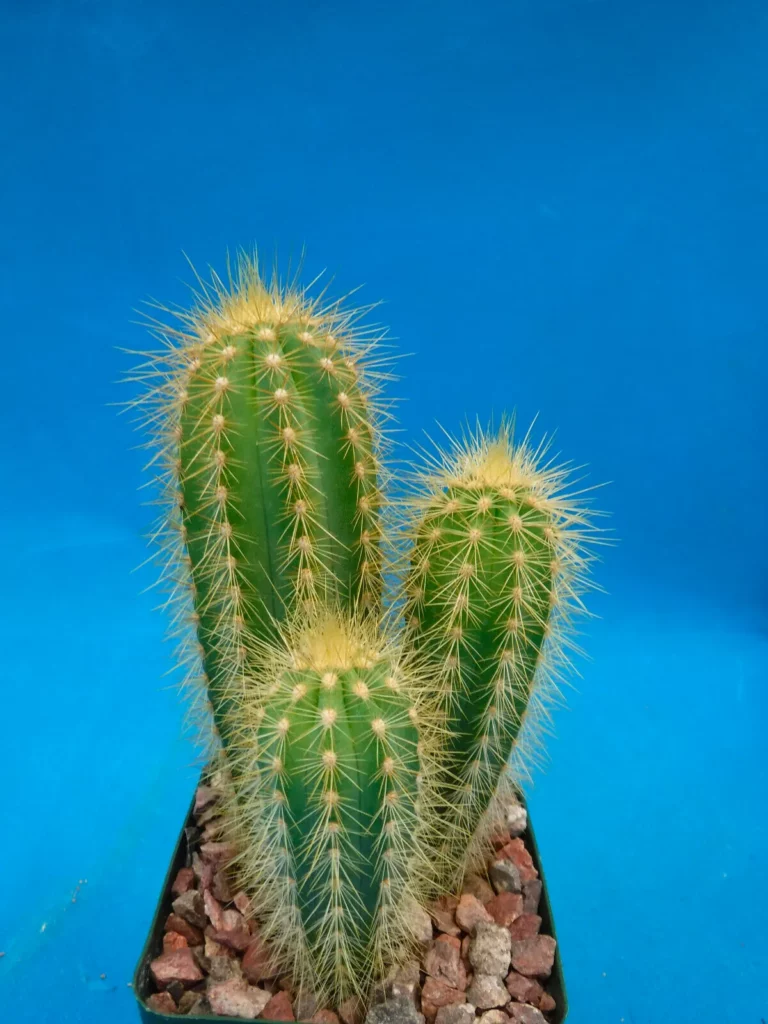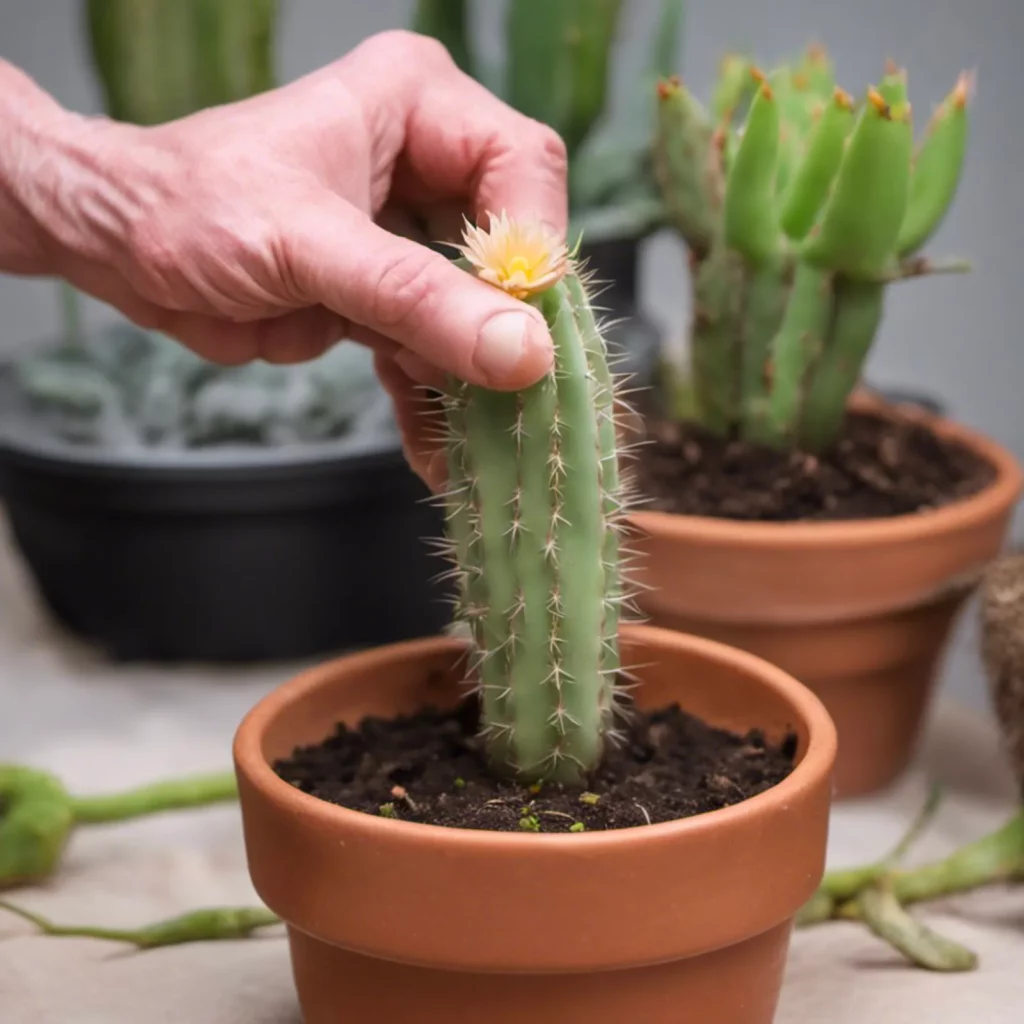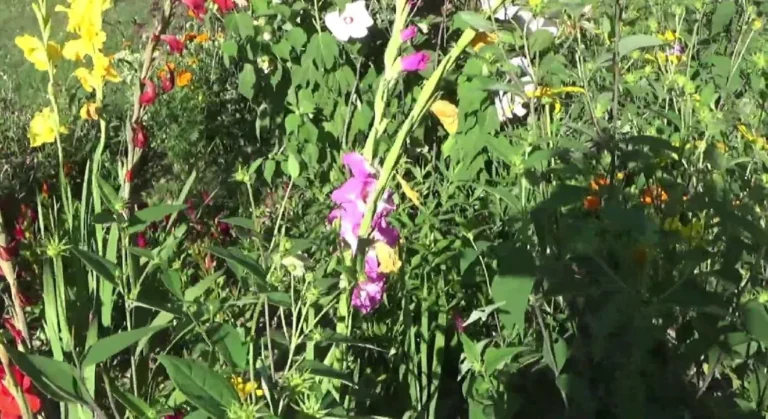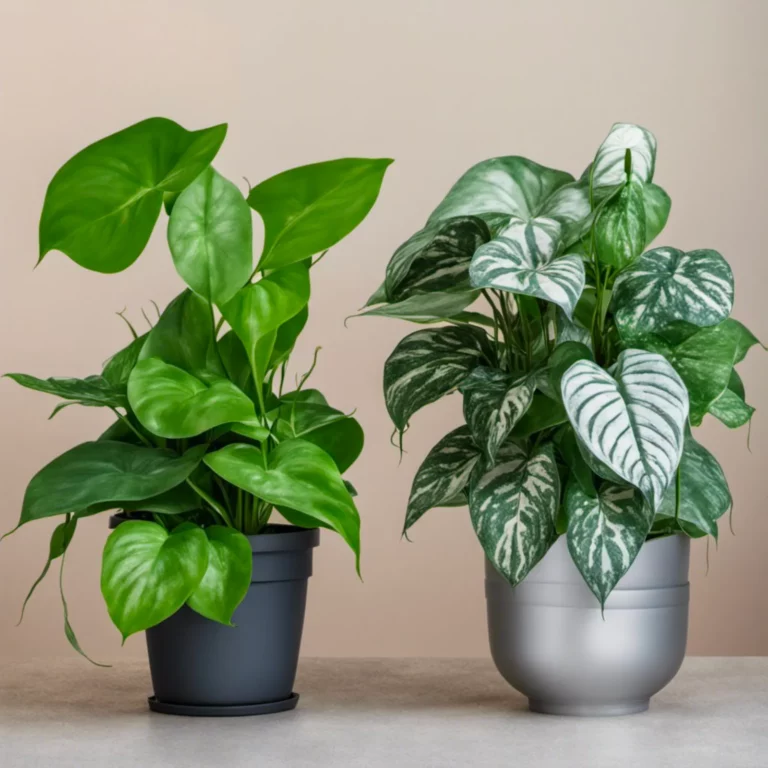Pilosocereus Baumii: A Beginner’s Guide to Caring for the Tree Cactus
You’ve probably seen cacti before, but have you heard of Pilosocereus Baumii? This slow-growing cactus is a great addition to any home or garden due to its low-maintenance needs.
With a cylindrical stem that can reach up to 10 feet in height and covered in white hairs that grow thicker as the cactus ages, Pilosocereus Baumii is a unique and beautiful plant that can add character to any space.
If you’re looking for a plant that doesn’t require a lot of attention, Pilosocereus Baumii is a great choice. This cactus produces small, white flowers that bloom in the summer, adding a pop of color to your space without requiring much effort on your part. In this article, we’ll dive into the growth and care of Pilosocereus Baumii, as well as how to propagate it to expand your collection.
Key Takeaways
- Pilosocereus Baumii is a low-maintenance cactus that can add character to any space.
- This slow-growing cactus can reach up to 10 feet in height and produces small, white flowers in the summer.
- To care for Pilosocereus Baumii, you’ll need to provide it with the right amount of water, light, and nutrients, and propagate it correctly to expand your collection.

Pilosocereus Baumii
If you’re a fan of cacti, you might have heard of Pilosocereus Baumii. This cactus species is a great addition to any collection, thanks to its unique characteristics and easy-to-care-for nature.
What is Pilosocereus Baumii?
Pilosocereus Baumii is a cactus species that belongs to the Pilosocereus genus. It is also known as the “Old Man Cactus” because of the long, white hairs that grow on its stems. These hairs protect the cactus from sunburn and help retain moisture.
What are the Characteristics of Pilosocereus Baumii?
Pilosocereus Baumii is a slow-growing cactus that can reach up to 10 feet in height. It has a cylindrical stem that can grow up to 3 inches in diameter. The stem is covered in white hairs, which grow thicker as the cactus ages.
The cactus produces small, white flowers that bloom in the summer. These flowers are followed by edible fruits that are red or purple in color.
Pilosocereus Baumii is a hardy plant that can tolerate a wide range of temperatures. It prefers bright, indirect sunlight and well-draining soil. It is also drought-tolerant and can go long periods without water.
Where is Pilosocereus Baumii found?
Pilosocereus Baumii is native to Brazil, where it grows in rocky, mountainous regions. It is also found in other parts of South America, including Argentina, Paraguay, and Uruguay.
If you’re looking to add a unique cactus to your collection, Pilosocereus Baumii is definitely worth considering. Its long, white hairs and edible fruits make it a standout species, while its easy-to-care-for nature makes it a great choice for beginners.
How to Care for Pilosocereus Baumii?

If you are looking for a unique and easy-to-care-for cactus, Pilosocereus baumii might be the perfect choice for you.
This cactus is native to Brazil and is also known as Golden Torch Cactus due to its golden spines. Here are some tips for caring for your Pilosocereus baumii:
Soil and Potting
Pilosocereus baumii prefers well-draining soil that is porous and allows for good air circulation around the roots. A cactus mix that contains sand, perlite, and peat moss is ideal for this cactus.
When choosing a pot for your Pilosocereus baumii, make sure it has drainage holes to prevent water-logging and root rot.
Light and Temperature
Pilosocereus baumii thrives in full sun to partial shade, depending on the season. During the summer months, it can handle full sun, but in the winter, it prefers partial shade to prevent sunburn.
This cactus prefers warm temperatures between 60°F and 90°F but can tolerate cooler temperatures down to 50°F.
Watering and Fertilizing
Pilosocereus baumii is a drought-tolerant cactus and prefers to be watered sparingly. Water your cactus thoroughly once a week during the growing season and reduce watering to once every two to three weeks during the winter months. Make sure the soil is completely dry before watering again to prevent overwatering and root rot.
When it comes to fertilizing, Pilosocereus baumii does not require much. A balanced cactus fertilizer can be applied once a month during the growing season to promote healthy growth.
Propagating Pilosocereus Baumii

Pilosocereus baumii is a beautiful cactus with long, slender stems that can grow up to six feet tall. If you’re a fan of this stunning plant, you may want to propagate it to get more of them.
Fortunately, propagating Pilosocereus baumii is a relatively simple process that you can do at home with just a few basic tools.
Overview of Propagation Methods
There are two main methods for propagating Pilosocereus baumii: stem cuttings and seeds. Stem cuttings are the most common method and are generally easier and faster than growing from seeds. However, growing from seeds can be a fun and rewarding experience if you’re up for the challenge.
Step-by-Step Guide to Successful Propagation
Propagating from Stem Cuttings
- Choose a healthy stem: Look for a stem that is at least six inches long and has no signs of damage or disease.
- Cut the stem: Use a sharp, sterile knife to cut the stem at a 45-degree angle. Make sure to cut the stem cleanly and avoid crushing or damaging it.
- Let the cuttings dry: Set the cuttings aside in a dry, shaded area for at least a week to allow the cut to callus over. This will help prevent the cutting from rotting when you plant it.
- Plant the cuttings: Once the cuttings have callused over, plant them in a well-draining cactus soil mix. Make sure to plant them deep enough so that they can stand up on their own.
- Water the cuttings: Water the cuttings lightly, just enough to moisten the soil. Do not water again until the soil has completely dried out.
- Keep the cuttings warm: Pilosocereus baumii cuttings need warm temperatures to root properly. Keep them in a warm, bright location, but out of direct sunlight.
- Wait for roots to grow: It can take several weeks for roots to grow. Be patient and resist the urge to water too much or too often.
Propagating from Seeds
- Collect the seeds: Collect the seeds from a mature Pilosocereus baumii plant. You can find the seeds inside the fruit of the plant.
- Prepare the soil: Plant the seeds in a well-draining cactus soil mix. Make sure the soil is moist but not waterlogged.
- Cover the seeds: Cover the seeds with a thin layer of soil and gently press down to ensure good soil-to-seed contact.
- Keep the soil warm: Pilosocereus baumii seeds need warm temperatures to germinate. Keep them in a warm, bright location, but out of direct sunlight.
- Wait for germination: It can take several weeks for the seeds to germinate. Be patient and keep the soil moist but not waterlogged.
Common Problems and Solutions
Growing Pilosocereus baumii can be a rewarding experience, but it’s not without its challenges. Here are some common problems you may encounter and how to solve them:
Overwatering
Overwatering is a common mistake that can lead to root rot and other issues. To avoid overwatering, make sure the soil is completely dry before watering again. You can also use a well-draining soil mix and a pot with drainage holes to help prevent water from accumulating in the soil.
Underwatering
Underwatering can cause the plant to become dehydrated and wilt. To avoid underwatering, make sure to water your Pilosocereus baumii regularly, especially during the growing season. You can also mist the plant occasionally to increase humidity.
Pest Infestations
Pests like mealybugs and spider mites can damage the plant and stunt its growth. To prevent pest infestations, keep the plant in a clean and well-ventilated area. You can also use insecticidal soap or neem oil to treat the plant if you notice any signs of infestation.
Sunburn
Sunburn can occur if the plant is exposed to too much direct sunlight. To prevent sunburn, make sure to keep the plant in a bright but indirect light. You can also use shade cloth or sheer curtains to filter the sunlight.
Fungal Infections
Fungal infections can occur if the plant is exposed to too much moisture. To prevent fungal infections, make sure to keep the plant in a well-ventilated area and avoid overwatering. You can also use a fungicide to treat the plant if you notice any signs of infection.
Nutrient Deficiencies
Nutrient deficiencies can cause the plant to become weak and stunted. To prevent nutrient deficiencies, make sure to use a balanced fertilizer and follow the manufacturer’s instructions. You can also supplement the plant with additional nutrients if necessary.
FAQs
If you’re new to growing Pilosocereus baumii or have some questions about caring for this cactus, we’ve got you covered. Here are some frequently asked questions and answers to help you out:
How often should I water my Pilosocereus baumii?
Pilosocereus baumii prefers well-draining soil and doesn’t like to be overwatered. Water your cactus every 12 days, giving it 0.8 cups of water when it doesn’t get direct sunlight and is potted in a 5.0″ pot. Make sure the soil is completely dry before watering again.
How much light does Pilosocereus baumii need?
Pilosocereus baumii prefers bright, indirect light. Too much direct sunlight can scorch the cactus. Place it near a window that gets plenty of light, but make sure it’s not in direct sunlight for extended periods of time.
How often should I fertilize my Pilosocereus baumii?
Fertilize your Pilosocereus baumii once a month during the growing season (spring and summer) with a cactus-specific fertilizer. Do not fertilize during the dormant season (fall and winter).
How often should I repot my Pilosocereus baumii?
Pilosocereus baumii grows slowly and doesn’t need to be repotted often. Repot it only when it outgrows its current pot. When repotting, use a well-draining soil mix and a pot that’s only slightly larger than the current one.
What should I do if my Pilosocereus baumii starts to rot?
Overwatering can cause Pilosocereus baumii to rot. If you notice any signs of rot, such as mushy or discolored stems, stop watering immediately. Cut away any affected areas with a clean, sharp knife and let the cactus dry out completely before watering again.
Conclusion
In conclusion, Pilosocereus baumii is a fascinating cactus species that has a lot of potential in the field of traditional medicine. With its anti-inflammatory and anti-diabetic properties, it is a promising candidate for further research and development.
If you are interested in growing Pilosocereus baumii, it is important to keep in mind that it requires a warm and sunny environment with well-draining soil. It is also important to water it sparingly and only when the soil is completely dry to avoid overwatering.





